| Included in the Museum of Natural History are the
Mineralogical Galleries with displays of naturally occurring minerals. Many
of the displays of smaller samples are in cases like these each with labels
showing what each sample is and where it was found. | 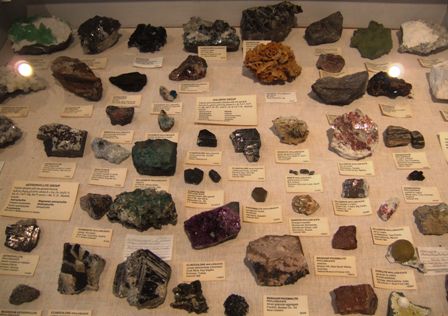 |
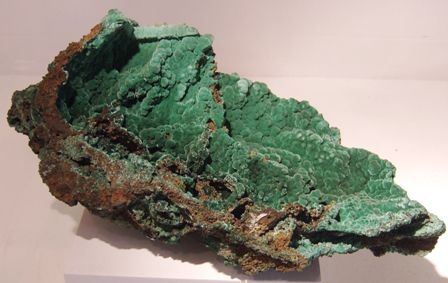 |
The larger samples are displayed in separate cabinets and often have their
individual sample name. This is an example of malachite, a velvety crystal
carbonate aggregate from Bisbee in Cochise Co, Arizona. (Been there!) |
| This is called brenham and is a stony iron pallasite
from Brenham, in Kiowa county, Kansas (found in 1888) . | 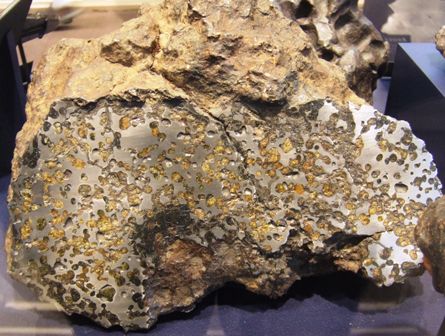 |
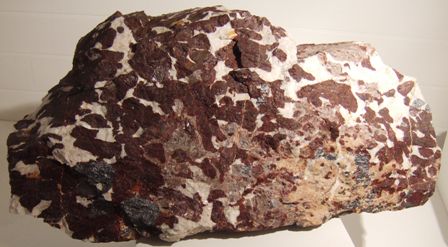 |
These are Zincite crystals in calcite from Franklin, Sussex Co, New Jersey. |
| This is atacamite crystals on chrysocolla from the
Miraflores mine in Tierra Amarilla, Atacama, Chile and was found in 2002. | 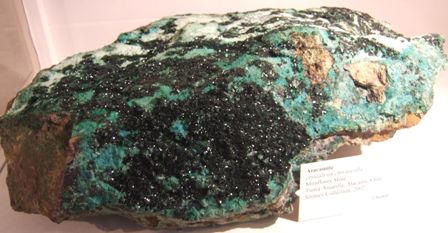 |
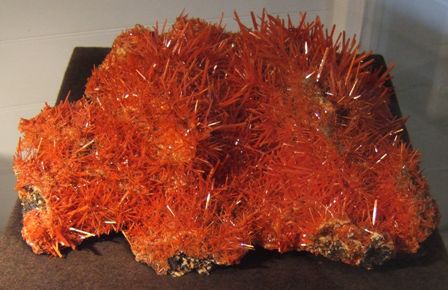 |
These bright red crystals are crocoite, acicular prisms on matrix, a
chromate from near Dundas in Tasmania. |
| This is a large polished agate module slice from Salto
Jacqui in Rio Grande do Sul, Brazil. It was acquired in 1995. | 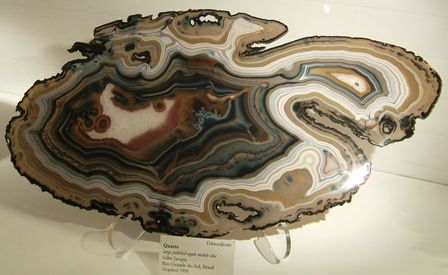 |
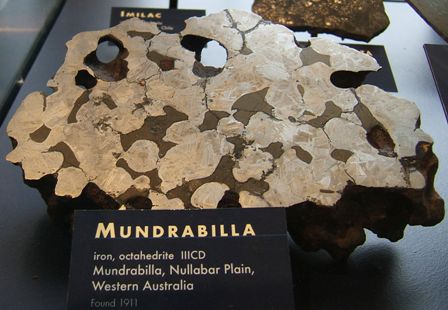 |
This is mundrabilla, an iron octohedrite from the Nullabar Plain in Western
Australia and was found in 1911. |
| This was one of several samples of stibnite, prismatic
crystals with quartz, from Iyo Ehime, Shikoku, Japan. | 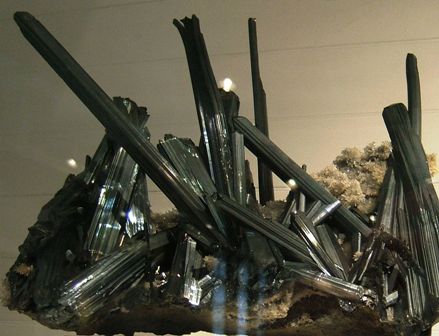 |
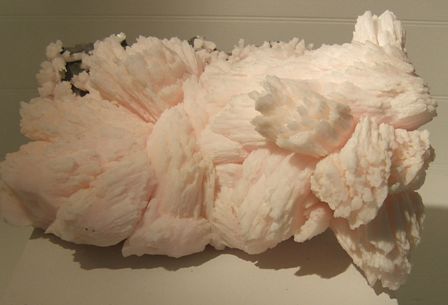 |
This is calcite, manganoan, plumose crystals from the Pachapaqui mine in
Ancash, Peru. |
| Wulfenite, yellow crystals with orange mimetite from
the San Francisco mine, Magdalena district, Sonora Mexico, acquired in 1976. | 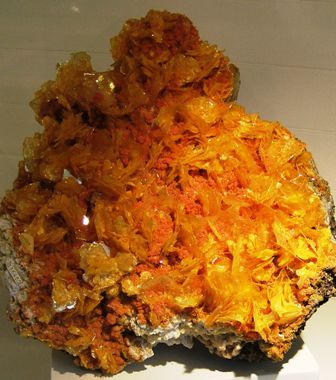 |
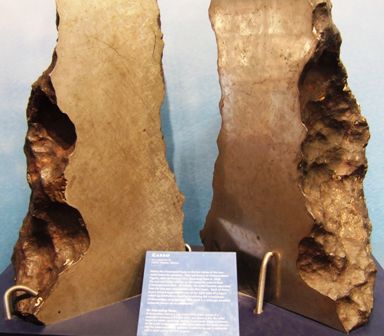 |
And finally from another planet, a meteorite called Carbo, an iron
octohedrite IID, which was found in 1923 at Carbo in Sonora, Mexico. There
are criss-cross patterns in this nickel iron specimen which are known as
Widmanstätten patterns. These are only
visible if the nickel content is between 6 and 13%. Each of the thin nickel
layers forms up parallel to an octohedron pattern. The end result (alas not
visible here) is strikingly beautiful to an expert. |
|